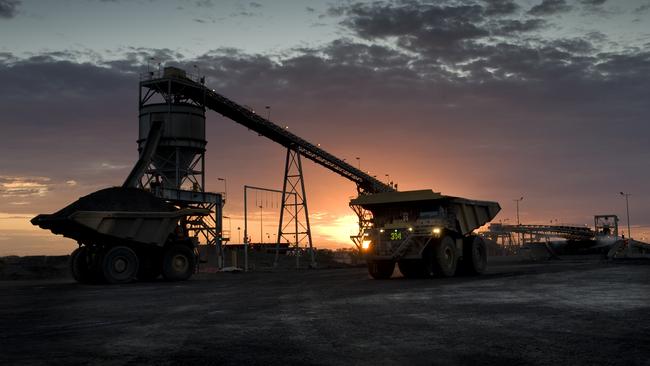Australian coal exports set to keep rising to satisfy Asia demand
Coal exports are tipped to defy the global climate policy push, climbing to satisfy Asian demands for the fossil fuel.

Australian coal exports are set to rise until 2024 as demand from developing Asian nations offsets falls in the use of the fossil fuel in the US and Europe, the International Energy Agency forecasts.
Global coal demand grew by 1.1 per cent in 2018 and is expected to steadily increase over the next five years, driven by demand in India, China and South-East Asia.
Despite efforts to cut use of the polluting fuel to combat global warming, it remains the world’s largest source of electricity, with 38 per cent of the global share. Power generation from coal rose by almost 2 per cent in 2018 to reach an all-time high.
Australian coal production is forecast to rise 1.4 per cent annually to 444m tonnes in 2024 from 409 million tonnes in 2018.
The country’s coal exports rose by 0.8 per cent last year to 382m tonnes which, combined with higher prices, resulted in record revenue of $US67 billion ($97.5bn) and saw coal outpace iron ore as the nation’s most valuable export commodity.
Australia’s output of coking coal, used for steel production, is forecast to increase by 1.8 per cent per year to 194m tonnes from 174m tonnes while thermal coal, used for power generation, will rise 1.1 per cent to 234m tonnes from 219m tonnes.
“Despite all the policy changes and announcements, our forecast is very similar to those we have made over the past few years. There are few signs of change,” the IEA said, while noting that use of thermal coal generation will likely dip this year.
India will account for the biggest contribution to coal demand growth in the next five-year period, with a 4.6 per cent annual rise in coal power generation despite fourfold growth in renewable energy generation.
“Overall, India’s coal demand is expected to grow by more than that of any other country, in absolute terms, over the forecast period,” the IEA noted.
China, responsible for half the world’s consumption, saw its consumption increase by 1 per cent last year but the IEA expects modest growth in the years ahead, with demand ultimately plateauing in 2022.
“While reducing air pollution and CO2 emissions will be policy priorities for China, coal is expected to continue play an important role in sustaining economic growth and guaranteeing energy security.”
Over the last two decades coal demand has suffered dips, notably during the adoption of critical climate talks with the Kyoto Protocol in 1997 and the Paris agreement in 2015 both resulting in multi-year declines.
However, the IEA said expectations of an imminent coal collapse have come and gone before and while the investment climate toward the fuel has changed, it would not result in any sudden plunge in demand.
“Between 2000 and 2013, global coal use rebounded spectacularly. It soared 75 per cent, more than it had done over the entirety of the previous nine decades. A similar upsurge is not expected in today’s context, but neither is a sudden plunge,” the IEA said.
It called for the rollout of carbon capture and storage technologies through Asia’s young power plants to bring the world into line with international goals on climate, air quality and energy access.
“Despite the growth in low-carbon fuels in recent decades, the reality is that coal remains a major fuel in global energy markets while accounting for over 40 per cent of global energy-related CO2 emissions. While more and more industrialised countries have announced plans to phase out the use of coal in the years to come, the world consumes 65 per cent more coal today than in the year 2000,” the IEA said.



